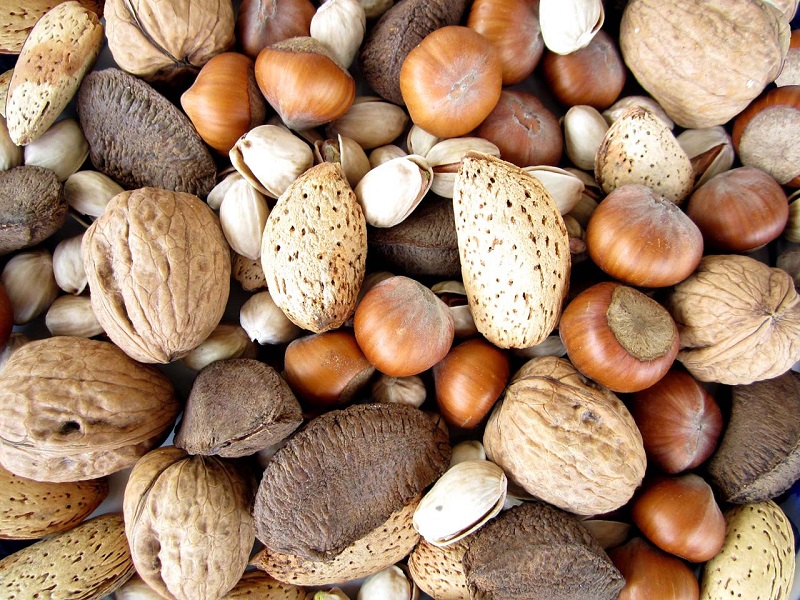Hazelnut kernel meal is a byproduct that is derived from the processing of hazelnuts. It holds significant potential in various industries due to its rich nutritional composition and unique properties. This summary explores the uses, benefits, production process, and market potential of hazelnut kernel meal as a versatile and sustainable ingredient.
Hazelnut kernel meal is a high-protein, low-carbohydrate ingredient that can be used in diverse applications such as food, feed, and various industrial uses. It is an excellent source of essential amino acids, vitamins, minerals, dietary fiber, and antioxidants. The meal is obtained by grinding the kernel of hazelnuts after the extraction of oil.
In the food industry, hazelnut kernel meal finds applications in baked goods, confectionery, sauces, dressings, and dairy alternatives. It is often used as a flavorful and nutrient-dense ingredient that adds texture, aroma, and nutritional value to food products. The meal’s nutty flavor and crunchy texture make it an ideal addition to cereals, snacks, bars, and desserts. It can also be used as a substitute for flour in gluten-free recipes.
In the animal feed industry, hazelnut kernel meal serves as a valuable ingredient for livestock and poultry diets. Its high protein content and balanced amino acid profile make it an excellent source of nutrition for animals. Incorporating hazelnut kernel meal in animal feed can improve feed efficiency, growth performance, and overall health. Its flavorful nature is also attractive to animals, enhancing their appetite and palatability.
Apart from its food and feed applications, hazelnut kernel meal has potential uses in the cosmetic and pharmaceutical industries. Due to its rich antioxidant content, the meal can be utilized in skincare formulations, nutraceuticals, and natural remedies. The antioxidants present in hazelnut kernel meal help protect the skin from oxidative damage and provide anti-aging benefits.
The production process of hazelnut kernel meal involves several steps. First, harvested hazelnuts undergo a cleaning process to remove any impurities. Then, the nuts are cracked to separate the kernel from the shell. The kernels are subsequently roasted to enhance flavor and facilitate the extraction of hazelnut oil. After oil extraction, the remaining kernels are ground into fine particles, resulting in hazelnut kernel meal.
Hazelnut kernel meal offers several advantages that contribute to its market potential. It is a sustainable and environmentally friendly ingredient that utilizes the byproduct of the hazelnut industry. Incorporating hazelnut kernel meal into various products helps reduce waste and contributes to the circular economy. Additionally, hazelnut kernel meal provides nutritional benefits, improves flavor, and enhances the overall sensory experience of food and feed products.
The global demand for hazelnut kernel meal is on the rise, driven by increasing consumer awareness of the nutritional benefits and sustainability aspects of food products. The food industry is particularly interested in incorporating hazelnut kernel meal into gluten-free, plant-based, and health-focused products. Similarly, the animal feed industry recognizes the value of hazelnut kernel meal as a sustainable protein source for animal diets.
In conclusion, hazelnut kernel meal is a versatile and sustainable ingredient with various applications in the food, feed, cosmetic, and pharmaceutical industries. With its nutritional benefits, unique flavor profile, and environmental advantages, hazelnut kernel meal has the potential to be an essential ingredient in a wide range of products. Its rising market demand reflects the growing interest in sustainable and healthy ingredients in today’s global marketplace.Hazelnut Kernel Meal: Exploring Business Opportunities
1. Introduction
– Overview of hazelnut kernel meal and its potential in various industries.
– Growing consumer demand for sustainable and healthy ingredients.
– Focus on the nutritional composition and unique properties of hazelnut kernel meal.

2. Food Industry Applications
– Utilization of hazelnut kernel meal in baked goods, confectionery, sauces, dressings, and dairy alternatives.
– Enhancing flavor, texture, and nutritional value in food products.
– Hazelnut kernel meal as a gluten-free flour alternative in baking.
3. Animal Feed Industry Uses
– Incorporating hazelnut kernel meal in livestock and poultry diets to improve feed efficiency and growth performance.
– Providing balanced nutrition and essential amino acids for animals.
– Enhancing palatability and appetite due to the flavorful nature of hazelnut kernel meal.
4. Cosmetic and Pharma Applications
– Harnessing the antioxidant properties of hazelnut kernel meal for skincare formulations.
– Anti-aging benefits and protection against oxidative damage.
– Potential use in nutraceuticals and natural remedies.
5. Production Process
– Detailed explanation of the production process of hazelnut kernel meal.

– Cleaning, cracking, roasting, and grinding of hazelnuts to obtain the meal.
– Sustainable utilization of byproducts from the hazelnut industry.
6. Environmental Advantages
– Hazelnut kernel meal as a sustainable ingredient that reduces waste.
– Contributing to the circular economy by utilizing byproducts.
– Aligning with consumer demand for environmentally friendly products.
7. Nutritional Benefits
– Highlighting the high protein content, essential amino acids, vitamins, minerals, dietary fiber, and antioxidants in hazelnut kernel meal.
– Contribution to a balanced diet and improved health outcomes.
– Nutritional advantages for both humans and animals.
8. Market Potential
– Increasing global demand for hazelnut kernel meal across industries.
– Growing consumer awareness and demand for sustainable and healthy ingredients.
– Opportunities in gluten-free, plant-based, and health-focused product categories.

9. Supply and Demand Dynamics
– Overview of hazelnut production and its impact on hazelnut kernel meal availability.
– Potential challenges in meeting the increasing demand for hazelnut kernel meal.
– Exploration of potential partnerships and collaborations to ensure a consistent supply.
10. Competitive Landscape
– Analysis of key players in the hazelnut kernel meal market.
– Evaluation of their product offerings, distribution channels, and market share.
– Identification of emerging players and potential market disruptors.
11. Regulatory Considerations
– Compliance with food safety and quality regulations for hazelnut kernel meal.
– Adherence to labeling requirements and claims associated with nutritional benefits.
– Exploration of organic and sustainable certifications to gain a competitive edge.
12. Future Outlook and Conclusion
– Positive outlook for the hazelnut kernel meal market due to increasing consumer demand and industry trends.

– Continual innovation and product development to capitalize on market opportunities.
– Importance of collaboration between industry stakeholders to drive growth and address challenges.
In conclusion, hazelnut kernel meal offers significant business opportunities in the food, feed, cosmetic, and pharmaceutical industries. Its versatile nature, nutritional benefits, and sustainable attributes make it an attractive ingredient for a wide range of products. As consumer demand for sustainable and healthy ingredients continues to grow, the hazelnut kernel meal market is poised for expansion. Collaboration between industry stakeholders, continual innovation, and adherence to regulatory requirements are vital for unlocking the full potential of hazelnut kernel meal and maximizing its market impact.










